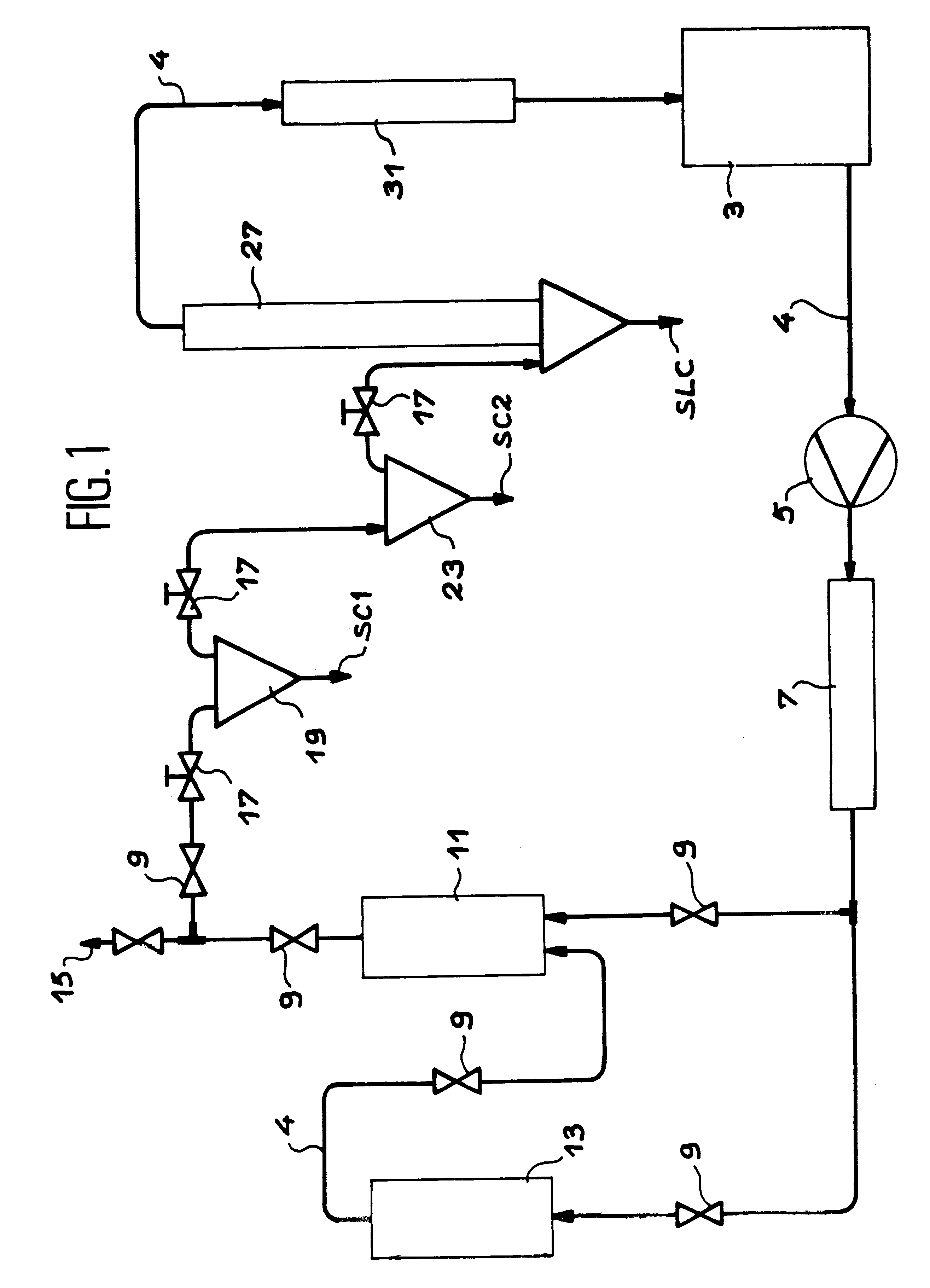Method for making single or mixed metal oxides or silicon oxide
a technology of metal oxides and silicon oxides, applied in zirconium oxides, supercritical condition processes, inorganic chemistry, etc., can solve the problems of uncontrollable final particle size, affecting the sintering effect, so as to achieve interesting textural characteristics and improve the effect of sintering
- Summary
- Abstract
- Description
- Claims
- Application Information
AI Technical Summary
Benefits of technology
Problems solved by technology
Method used
Image
Examples
example 1
Manufacture of a Product Based on Silicon Oxide
In this example, the charge of precursor is made up of 98% pure tetra-ethoxy silane, of molecular weight 208.33 g.mol.sup.-1 and of density d=0.934. For example, this product available in the ALDRICH catalogue and has the number 13.190.3.
For this precursor, tetra-ethoxy silane, particular E operations were carried out in addition to those described previously:
starting with the operating conditions of the E2 operation, the contact time was fixed at 2 hours, 10 hours, 20 hours and 72 hours, p1 starting with the operating conditions of the E2 operation, one continued with fast pressure reduction designated DR below, for a period of 30 minutes and with slow pressure reduction, designated DL below, for a period of 3 hours.
These fast and slow pressure reductions have been carried out by reducing the pressure of the supercritical CO.sub.2 from 3.times.10.sup.7 to 10.sup.5 Pa.
Table 2 shows a mass balance for the manufacture of a product based o...
example 2
Manufacture of a Product Based on Titanium Oxide
In this example, the precursor charge is made up of 97% pure titanium iso-propoxide, with a molecular weight of 284.26 g.mol..sup.-1 and a density d=0.955. This product is available, for example, in the ALDRICH catalogue under the number 20.527.3.
The operations described in Table 1 were carried out, without studying the influence of the method of pressure reduction or that of contact time.
For the whole of the type C and E operations, the method leads, in relation to the operating conditions, to amorphous products of variable macroscopic and microscopic morphological appearance.
Table 5 shows the mass balance for the formation of metal oxide based products according to the method of the invention.
Table 6 shows a morphological record of the products obtained and the effect of the operating conditions of the method.
The C2 and E4 extracts lead to the formation of a powder. The analyses of the products formed were directed towards these two ...
PUM
| Property | Measurement | Unit |
|---|---|---|
| temperature | aaaaa | aaaaa |
| specific surface area | aaaaa | aaaaa |
| specific surface area | aaaaa | aaaaa |
Abstract
Description
Claims
Application Information
 Login to View More
Login to View More - R&D
- Intellectual Property
- Life Sciences
- Materials
- Tech Scout
- Unparalleled Data Quality
- Higher Quality Content
- 60% Fewer Hallucinations
Browse by: Latest US Patents, China's latest patents, Technical Efficacy Thesaurus, Application Domain, Technology Topic, Popular Technical Reports.
© 2025 PatSnap. All rights reserved.Legal|Privacy policy|Modern Slavery Act Transparency Statement|Sitemap|About US| Contact US: help@patsnap.com


